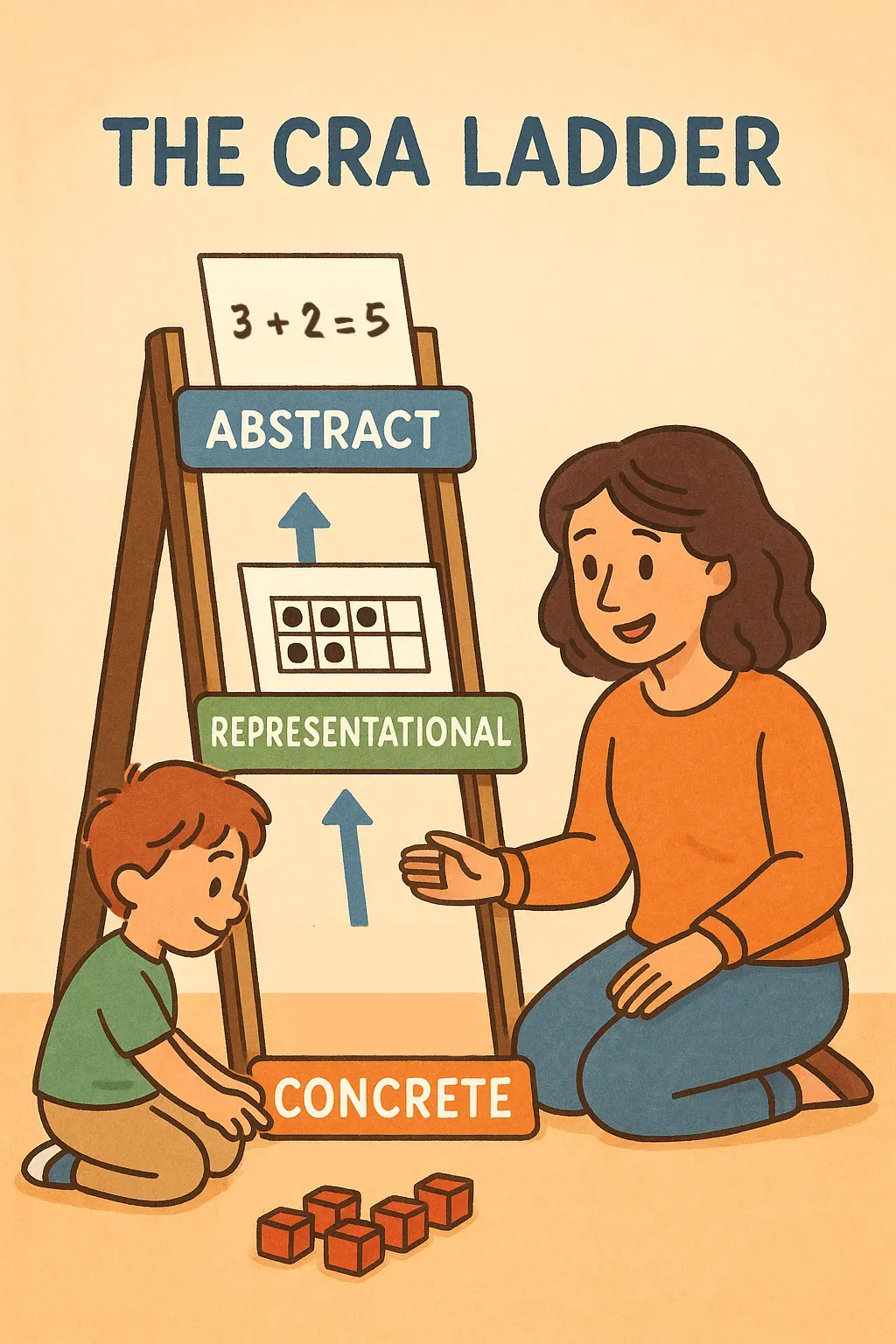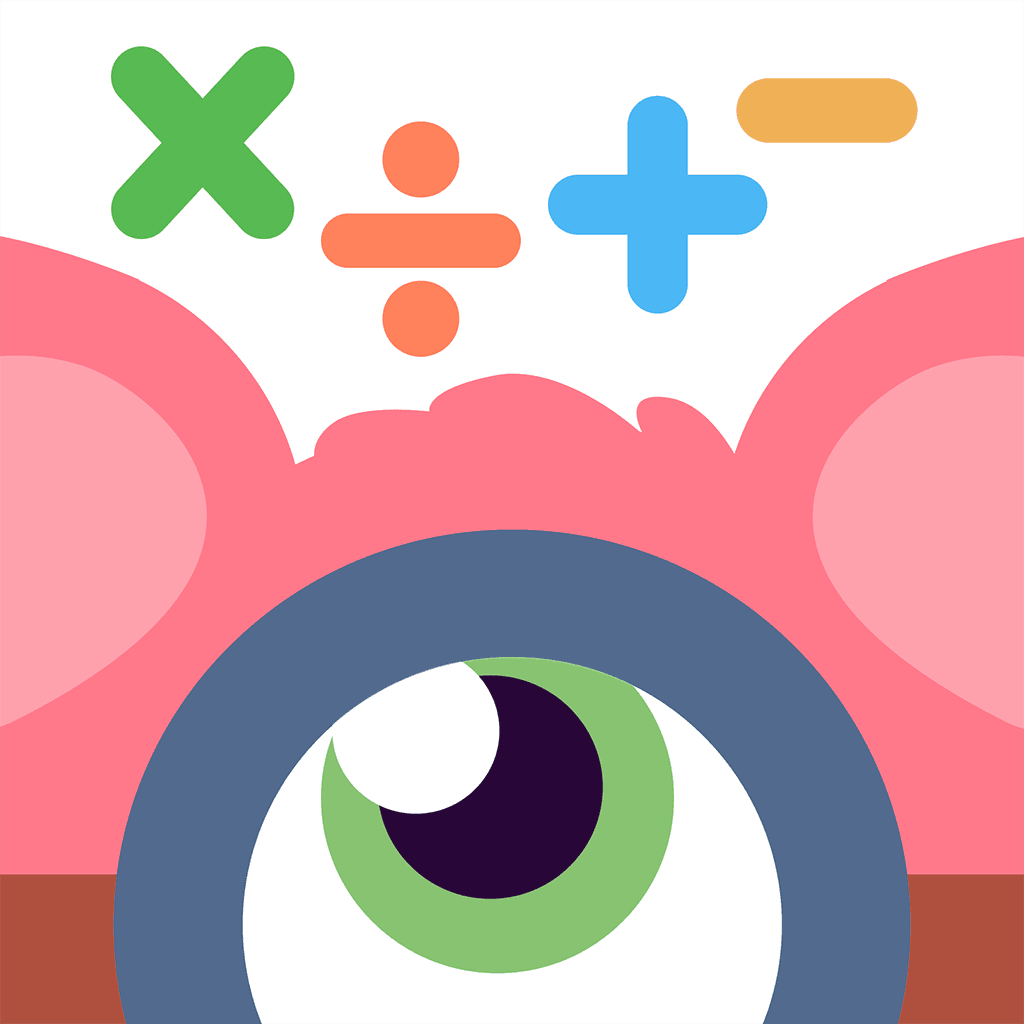Concrete-Representational-Abstract (CRA) Approach: Parent's Guide to Math Success for Children with ADHD
TL;DR
The Concrete-Representational-Abstract (CRA) method is a teaching strategy that helps children learn math by starting with hands-on activities, moving to visual representations, and finally to abstract concepts. This approach is particularly beneficial for children with ADHD because it engages multiple senses and breaks down complex ideas into manageable steps. Parents can easily implement CRA at home with simple materials like blocks, drawings, and number lines.
Introduction
Math can be challenging for many children, but for those with Attention Deficit Hyperactivity Disorder (ADHD), it can be especially difficult. Children with ADHD often struggle with focus, organization, and working memory, all of which are crucial for learning math.
However, there is a teaching method that can make math more accessible and enjoyable for these children: the Concrete-Representational-Abstract (CRA) approach.
The CRA method is a systematic instructional strategy that progresses from concrete, hands-on experiences to representational, visual models, and finally to abstract symbols and concepts. This approach is grounded in cognitive psychology and has been shown to be effective for all learners and especially students with ADHD, Autism and Dyscalculia.
Why CRA is Particularly Helpful for Children with ADHD
Children with ADHD (and even Autism) often benefit from multisensory learning experiences. The CRA method provides just that by engaging different senses and learning styles at each stage:
- Concrete Stage: Using physical objects like blocks, counters, or base-ten blocks allows children to manipulate and see math concepts in action. This tactile experience helps them understand abstract ideas by connecting them to real-world objects.
- Representational Stage: Drawing pictures or using diagrams to represent the concrete objects helps children transition from physical manipulation to visual understanding. For example, instead of using actual blocks, they might draw circles to represent groups of items.
Read more on Visual Math Strategies that can help Neurodivergent kids. - Abstract Stage: Once children are comfortable with the representational stage, they can move to using numbers and symbols, which is the traditional way math is taught. By this point, they have a solid foundation of understanding built from the concrete and representational stages.
This step-by-step progression is particularly beneficial for children with ADHD because it breaks down complex concepts into smaller, manageable parts. It also allows them to see the "why" behind the math, not just the "how," which can increase their engagement and reduce frustration.
Children with Dyscalculia benefit from the structured move from concrete to abstract representation since they struggle most with abstract representation, so the scaffolding helps them.
This article is part of a bigger picture! Explore the full ADHD Math Survival Kit for more hands-on ideas.
How Parents Can Use CRA at Home

Parents don't need to be math experts to use the CRA method at home. Here are some simple ways to incorporate it into everyday activities:
- Concrete Stage:
- Use household items like buttons, coins, or pasta to represent numbers. For addition, have your child combine two groups of objects and count the total.
- For subtraction, start with a group and take some away, then count what's left.
- Use measuring cups or spoons to teach fractions by filling and emptying them.
- Representational Stage:
- Draw pictures to represent the concrete objects. For example, draw circles to represent apples when teaching addition.
- Use number lines to show addition and subtraction. Mark the starting point, jump forward or backward, and land on the answer.
- Create simple graphs or charts to represent data, like the number of toys or books they have.
- Abstract Stage:
- Once your child is comfortable with the representational stage, introduce written numbers and symbols. Write down the addition or subtraction problems and have them solve them on paper.
- Use flashcards or online games that focus on basic facts to reinforce memorization.
It's important to move at your child's pace. Some children might need more time at the concrete stage before moving to representational, and that's okay. The key is to ensure they understand each stage before progressing to the next.
Specific Examples for Different Math Concepts
Here are some specific examples for different math concepts:
- Addition:
- Concrete: Use blocks or counters. For 2 + 3, have two blocks in one group and three in another, then combine them and count.
- Representational: Draw two circles and three circles, then draw a line to show combining them and count the total.
- Abstract: Write 2 + 3 = 5.
- Subtraction:
- Concrete: Start with five blocks, remove two, and count how many are left.
- Representational: Draw five circles, cross out two, and count the remaining.
- Abstract: Write 5 - 2 = 3.
- Multiplication:
- Concrete: Use arrays or groups. For 2 x 3, make two groups of three blocks each, then count all blocks.
- Representational: Draw two rows of three circles each, then count all circles.
- Abstract: Write 2 x 3 = 6.
- Fractions:
- Concrete: Use fraction bars or pie charts made from paper. For 1/2 + 1/4, use two fraction bars, one half and one quarter, and place them together to see they make 3/4.
- Representational: Draw a circle divided into halves and another into quarters, shade 1/2 and 1/4, then combine on a new circle divided into fourths.
- Abstract: Write 1/2 + 1/4 = 3/4.
Parents can also use online resources and apps that offer interactive manipulatives to supplement physical materials. Monster Math is one such app that focuses on Math Fact fluency using a CRA approach, strengthened with Strategy-based instruction.
Research Backing
The effects of a concrete, representational, abstract (CRA) instructional model on Tier 2 First-Grade Math students in a response to intervention model: Educational implications for number sense and Computational Fluency - Eastburn - Read more.
Using the Concrete–Representational–Abstract Sequence to Teach Subtraction With Regrouping to Students at Risk for Failure - Flores - Read more.
FAQ Section
Q: Is the CRA method only for children with ADHD?
A: No, the CRA method is beneficial for all children learning math. It is particularly helpful for children who struggle with abstract thinking or have learning disabilities, including ADHD.
Q: How long does it take to see improvement with the CRA method?
A: The time frame can vary depending on the child and the specific math concept being taught. Some children may show improvement within a few weeks, while others may take longer. Consistency and patience are key.
Q: What materials do I need to implement CRA at home?
A: You can use everyday household items like buttons, coins, blocks, or even drawings on paper. There are also many educational manipulatives available online or in stores that are specifically designed for math learning.
Q: Can I use digital tools for the CRA method?
A: Absolutely! There are many apps and online platforms that offer virtual manipulatives and interactive representations, which can be a great supplement to physical materials.
Apps like Monster Math specifically have CRA-based curriculum and are self-paced. Resources such as Didax virtual manipulatives can also allow free-play exploration or modeling of worksheet problems digitally.
Conclusion
The CRA method is a powerful tool for helping children with ADHD succeed in math. By starting with concrete, hands-on activities and gradually moving to abstract concepts, parents can provide their children with a strong foundation in mathematics. This approach not only makes math more understandable but also more enjoyable, which can boost a child's confidence and willingness to engage with the subject.
Remember, every child learns at their own pace, so be patient and supportive. With the CRA method, you can help your child climb the math ladder one step at a time.

